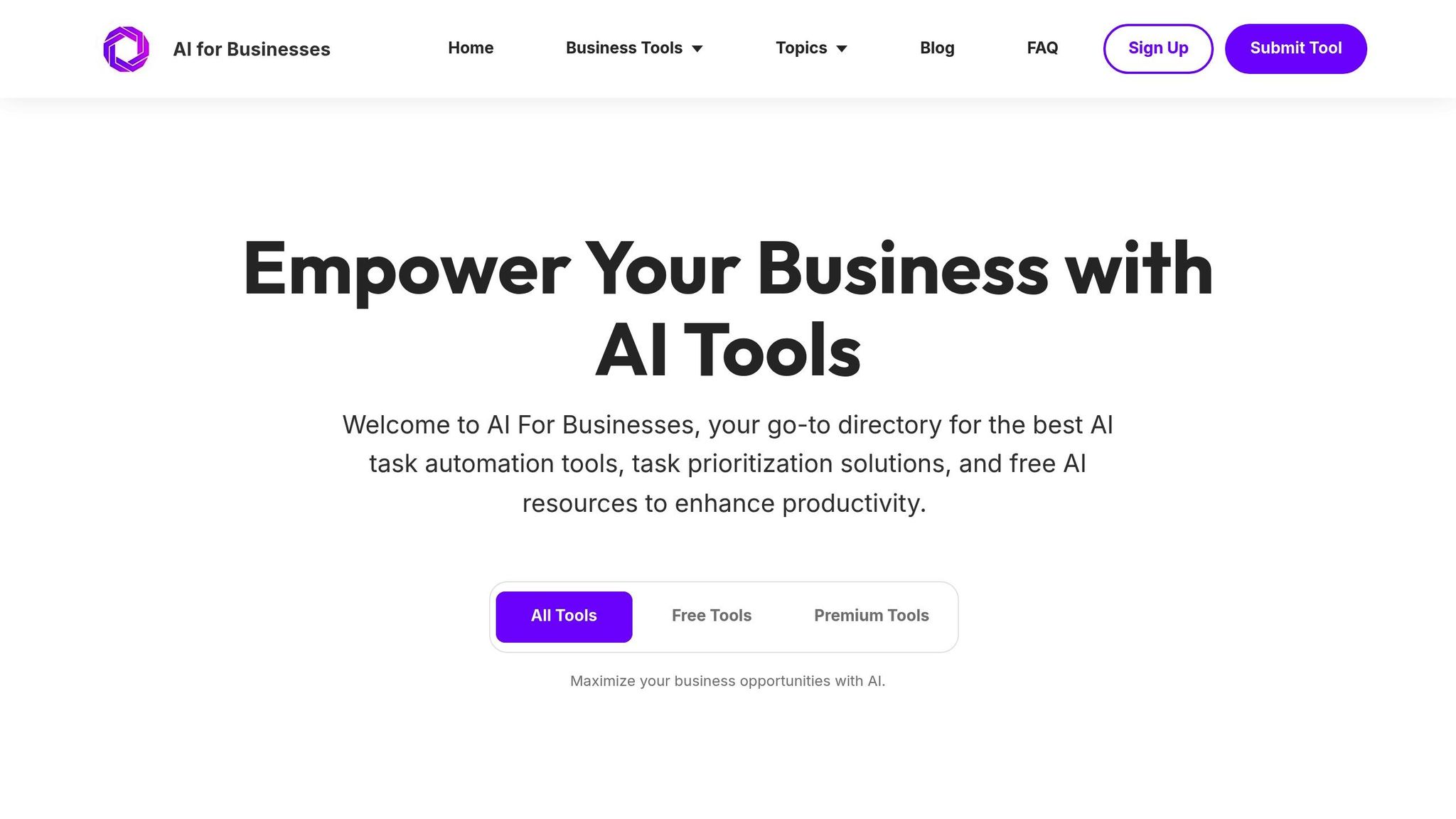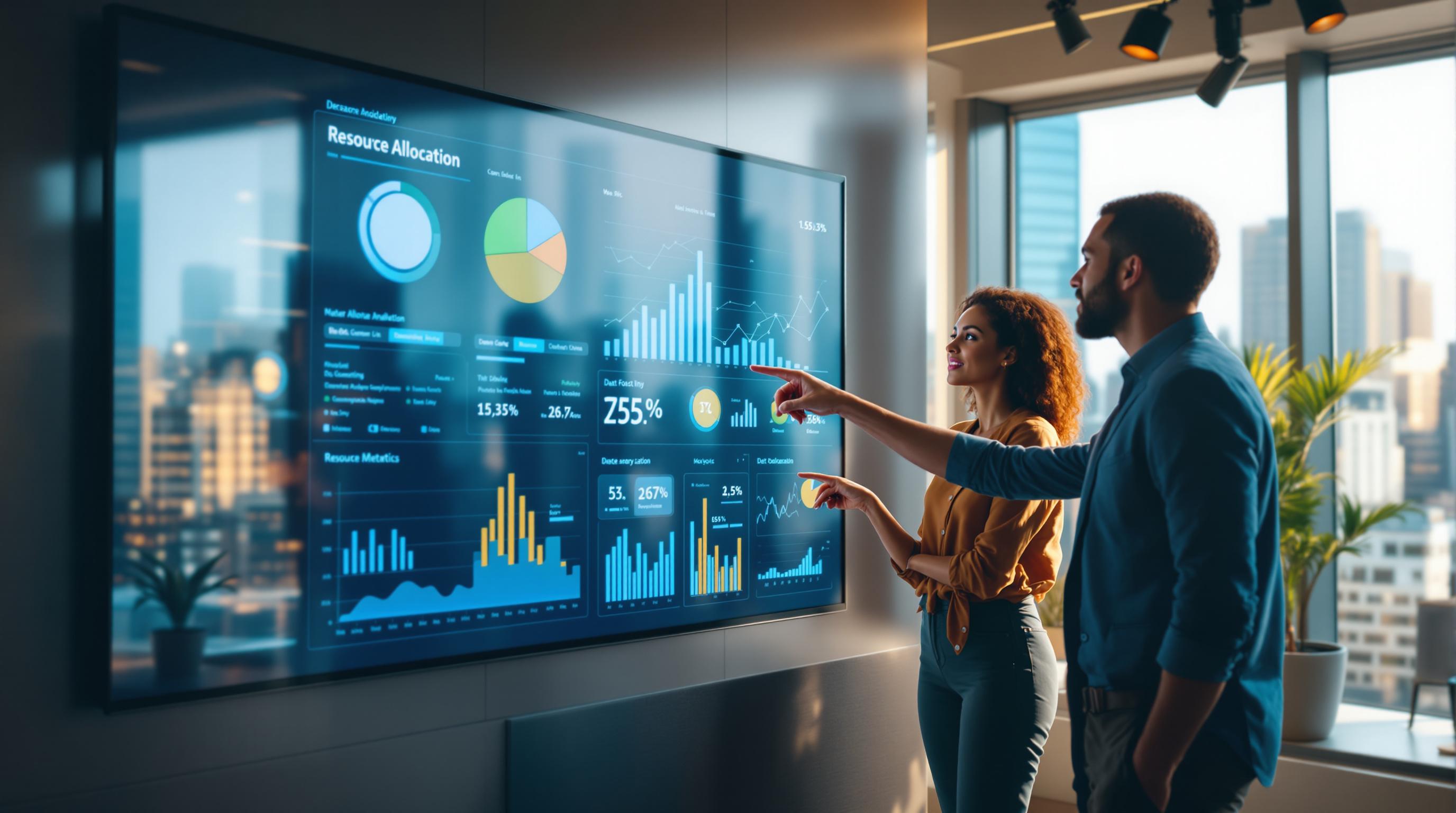Social media has made managing a brand's reputation faster and more challenging. A single negative post can spread within minutes, causing significant harm to businesses, especially small and medium-sized enterprises (SMEs). To address this, companies are increasingly using social media monitoring tools. These tools help businesses:
- Track mentions of their brand across platforms in real-time.
- Analyze public sentiment (positive, negative, neutral) using Natural Language Processing (NLP).
- Get early alerts for potential crises, enabling quick responses.
- Identify influential users who can amplify messages.
For SMEs, these tools are essential as they often lack large PR teams. By leveraging AI-powered insights, businesses can predict risks, prioritize responses, and protect their reputation effectively. The key is choosing the right tool based on specific needs, platforms, and budgets. Combining these tools with human judgment ensures smarter reputation management in today’s digital landscape.
What Is Social Media Monitoring? - BusinessGuide360.com
Key Features of Social Media Monitoring Tools
Modern social media monitoring tools are designed to help businesses stay on top of their online presence. By turning digital chatter into meaningful insights, these tools allow companies to track their reputation and respond effectively when needed.
These advanced features go beyond basic real-time tracking, offering a closer look at public sentiment and alerting businesses to potential crises.
Real-Time Monitoring and Brand Mention Tracking
Keeping tabs on brand mentions is the cornerstone of reputation management. These tools constantly scan platforms like Twitter, Facebook, Instagram, LinkedIn, Reddit, blogs, and even news sites to catch direct references and even common misspellings of your brand name. This ensures no critical conversation slips through the cracks. With customizable dashboards, businesses can quickly get an overview of their brand’s online presence.
Sentiment Analysis for Public Perception
Knowing how people feel about your brand is just as important as knowing what they’re saying. Sentiment analysis tools use Natural Language Processing (NLP) to assess the emotional tone behind online discussions. Whether it’s text, audio, or video content, these tools categorize sentiment as positive, negative, or neutral, helping businesses understand public perception at a glance. Recent advancements have expanded their ability to handle a variety of data types, making these insights even more precise.
Crisis Alerts and Early Warning Systems
Negative trends can spiral into bigger problems if left unchecked. Social media monitoring tools act as an early warning system, identifying potential issues before they escalate. By spotting these trends quickly, businesses can take immediate action to manage risks and safeguard their reputation.
Top Social Media Tools for Reputation Management
Picking the right tool can make all the difference when it comes to avoiding reputational challenges. These tools range from basic mention tracking to sophisticated platforms offering in-depth analytics and monitoring across multiple channels, including both social media and traditional media outlets.
Overview of Recommended Tools
Not all tools are created equal. Some are designed with advanced analytics and customizable reports for large-scale operations, while others focus on simplicity and quick setup, catering to smaller teams. When deciding on a tool, think about factors like how much data you need to process, the types of media you want to monitor, and how easily your team can use the insights to take action.
Comparison Table of Social Media Tools
Here's a breakdown of different types of tools and what they bring to the table:
| Tool Type | Best For | Key Strengths | Considerations |
|---|---|---|---|
| Enterprise-Level Solutions | Large organizations with significant monitoring needs | Comprehensive analytics, customizable reports, extensive data coverage | Requires specialized training; higher costs |
| Multi-Channel Monitoring Tools | Businesses needing coverage beyond just social media | Tracks traditional media alongside social platforms | Can be complex to use; may require extra resources |
| User-Friendly Tools | Small to medium-sized businesses | Easy setup, real-time monitoring, intuitive interface | Fewer advanced features compared to enterprise tools |
Your choice should align with your goals, budget, and your team's technical ability. Once you've chosen a tool, focus on best practices to get the most out of it.
sbb-itb-bec6a7e
Best Practices for Using Social Media Tools
Using social media tools effectively requires a thoughtful approach. By focusing on real-time tracking and sentiment analysis, these strategies can help you manage your brand's reputation more proactively.
Define Clear Monitoring Goals and Thresholds
Start by pinpointing what truly matters for your business reputation. Instead of tracking every mention of your brand, concentrate on specific risks and set clear priorities. For example, a single negative review might only need a routine response, while a pattern of similar complaints calls for immediate action.
Your approach should also reflect your industry. A healthcare company, for instance, might prioritize monitoring safety-related keywords, while a financial services firm might focus on discussions around compliance. By aligning your monitoring goals with outcomes like revenue growth or customer retention, you can avoid unnecessary alerts and zero in on what’s critical.
Customize Alerts and Reporting for Key Stakeholders
Not all teams need the same type of information. Customer service teams might benefit from real-time alerts to address issues quickly, while executives may prefer periodic summaries that give a broader view of trends.
Reports should also be tailored to meet the specific needs of each department. For example:
- Legal teams may need detailed logs with screenshots and timestamps.
- Product development teams can benefit from aggregated feedback that highlights recurring themes.
- Sales teams might focus on customer pain points, especially in comparison to competitors.
Establish a schedule for these reports - whether it's daily end-of-day updates or weekly summaries - to ensure everyone gets the right information at the right time without feeling overwhelmed.
Regular Review and Compliance Requirements
To keep your strategy sharp, periodically revisit and refine your monitoring parameters. Update keywords, adjust for regulatory changes (like SEC or HIPAA guidelines), and ensure compliance with data privacy laws.
Privacy regulations also dictate how you collect and store social media data. Make sure your tools respect user privacy by managing cookie consent and adhering to relevant laws. Regular analysis of your data can uncover patterns and trends, turning raw information into actionable insights. This not only helps you identify risks early but also ensures your reputation management efforts remain transparent and effective.
Using AI for Better Reputation Risk Analysis
AI takes reputation risk analysis to a whole new level by building on traditional monitoring methods. While older tools might catch basic mentions, AI-powered solutions dig deeper, offering predictive insights and automated responses that can help prevent crises before they unfold.
Benefits of AI-Powered Insights
AI transforms reputation management by processing massive amounts of social media data with incredible speed and accuracy. Machine learning algorithms can sift through thousands of posts in seconds, spotting subtle shifts in public sentiment that even the most skilled human analysts might overlook. This is especially important when monitoring multiple platforms simultaneously.
What sets AI apart is its ability to predict potential risks. By analyzing historical data, AI tools can identify patterns and predict when issues might arise. For example, if sentiment scores start dropping among a specific demographic or in a certain region, AI can flag these trends early and recommend proactive steps to address them.
AI also excels at understanding context. Using advanced natural language processing (NLP), it can distinguish between sarcasm, genuine complaints, and neutral mentions. This level of detail ensures businesses can prioritize their responses more effectively, focusing on what truly matters.
Additionally, AI solutions can automatically categorize mentions by topic and urgency. This means teams can quickly identify high-priority issues that need immediate attention versus those that can be handled through routine customer service. The result? Faster response times and smarter resource allocation.
These capabilities help businesses not only manage risks but also make more informed decisions when choosing the right AI tools.
Finding the Right AI Tools with AI for Businesses

Choosing the best AI-powered tools for reputation monitoring starts with aligning them to your business needs and budget. AI for Businesses offers a curated directory of tools designed to help small and medium-sized enterprises (SMEs) and growing companies improve their operations, including social media monitoring and reputation management.
The platform includes tools like Writesonic, among others, to streamline reputation management workflows. Instead of spending hours researching and comparing individual tools, you can access a collection of AI applications that have already been vetted for their effectiveness in real-world business settings.
When exploring tools in the directory, focus on features like real-time processing, integration with your existing social media management systems, customizable dashboards, and automated reporting. Scalable pricing models are another key factor, ensuring the tools can grow alongside your business.
The directory’s structure allows you to compare AI tools based on criteria like sentiment analysis accuracy, support for multiple platforms, and crisis alert capabilities. This saves time and ensures you’re investing in tools that align with your reputation management strategy.
AI for Businesses provides enterprise-level AI solutions at prices accessible to SMEs. By integrating these tools into your operations, you can enhance monitoring, improve response times, and strengthen your overall approach to reputation risk management.
Conclusion: Managing Reputation in the Digital Age
In today’s fast-paced digital world, reputation management is no longer optional - it’s essential. Social media platforms churn out millions of conversations every day, and a single negative comment can snowball into a crisis within hours. To stay ahead, brands need robust social media monitoring tools that enable immediate responses and real-time damage control.
For decision-makers, this means adopting a proactive mindset. Below, we’ve outlined key insights and steps to help businesses effectively manage their online reputation.
Key Takeaways for SME Decision-Makers
- Real-time monitoring and sentiment analysis are game-changers. Traditional surveys simply can’t keep up with the speed of social media. By understanding the context of online conversations, businesses can allocate resources effectively and respond to critical feedback before it spirals out of control.
- AI-driven insights shift the focus from reaction to prevention. By identifying patterns and predicting potential issues, AI tools help businesses address problems before they escalate. This forward-thinking approach not only minimizes crisis costs but also safeguards long-term brand value.
- Better tools lead to better outcomes. SMEs that use advanced monitoring tools report higher customer satisfaction and stronger brand loyalty compared to those relying on manual methods.
Next Steps for Implementing Social Media Tools
If you’re ready to take your reputation management strategy to the next level, here’s how to get started:
- Set clear goals and establish a budget. Identify the platforms your audience engages with the most and determine which conversations are most relevant to your business. This clarity will guide your choice of tools and ensure you invest in features that matter.
- Use curated platforms to simplify tool selection. Platforms like AI for Businesses offer access to vetted tools for sentiment analysis, real-time monitoring, and automated reporting, making it easier to find the right fit for your needs.
- Start small with a pilot program. Test one or two key tools before committing to a larger rollout. This allows your team to familiarize themselves with the technology, refine workflows, and prove the return on investment before scaling up.
- Balance technology with human expertise. While AI excels at analyzing data and spotting trends, human oversight is indispensable for crafting thoughtful responses and making strategic decisions. The best results come from combining AI-powered insights with the judgment of team members who know your brand inside and out.
Thriving in the digital age requires businesses to treat reputation management as an ongoing, strategic priority. By integrating the right tools and maintaining a human touch, you can protect your brand’s reputation, build customer trust, and position your business for long-term success.
FAQs
What should SMEs consider when selecting a social media monitoring tool that fits their needs and budget?
When selecting a social media monitoring tool, small and medium-sized enterprises (SMEs) should begin by pinpointing their specific objectives. Are you looking to track brand mentions, understand customer sentiment, or keep an eye on competitors? Knowing your goals upfront will make it easier to choose the right tool.
Budget is another crucial consideration. Decide how much you can spend without affecting other important areas of your business.
It’s also wise to prioritize tools that are easy to use and capable of growing with your business. Many platforms, especially those highlighted in AI-focused directories, offer tailored solutions designed to simplify operations and address reputation risks effectively.
How does AI improve reputation risk analysis on social media?
AI has transformed how businesses approach reputation risk analysis on social media, making the process quicker and more efficient. Using advanced algorithms, AI-driven tools can scan massive volumes of social media data in real time, flagging potential risks like negative comments, trending controversies, or harmful content before they spiral out of control.
With the help of natural language processing (NLP), these tools can interpret the tone, context, and intent behind posts, offering businesses a clearer understanding of how the public views them. AI also supports predictive analysis, helping companies foresee possible crises and take early action to safeguard their reputation.
How can social media monitoring tools help businesses track public sentiment and address potential reputation risks?
Social media monitoring tools leverage sentiment analysis to gauge public opinions about a business, product, or service by examining posts, comments, and other text shared on social platforms. Essentially, they help determine whether the general sentiment is positive, negative, or neutral.
By keeping a close eye on these trends, businesses can catch early signs of potential reputation challenges, such as growing dissatisfaction or negative feedback. This insight allows them to act quickly - whether it’s resolving issues, correcting false information, or enhancing customer interactions - to maintain and protect their brand's reputation.


